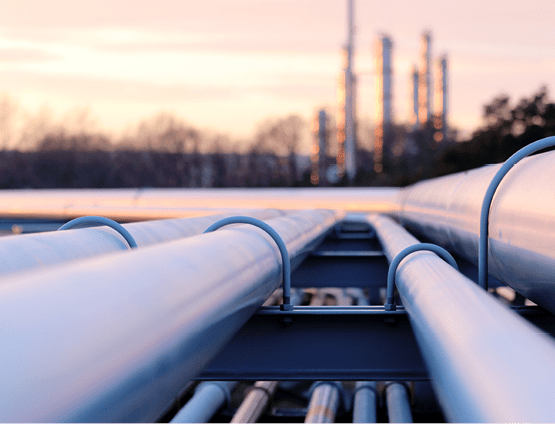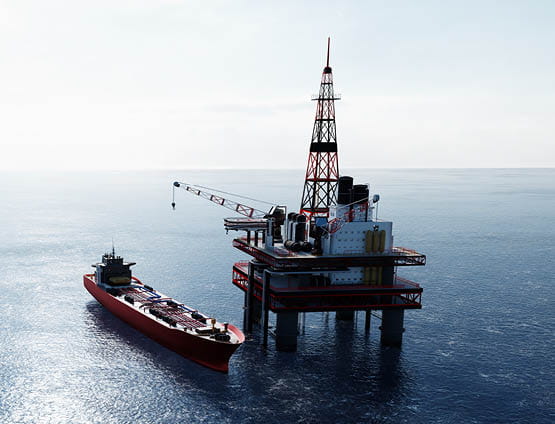Fill 'Er Up? The SPR That Is...
Fill 'Er Up? The SPR That Is...
The Strategic Petroleum Reserve (SPR), the world’s largest supply of emergency crude oil, was established primarily to reduce the impact of disruptions in supplies of petroleum products and to carry out obligations of the United States under the international energy program. The federally owned oil stocks are stored in huge underground salt caverns at four sites along the coastline of the Gulf of Mexico.
According to the Office of Cybersecurity, Energy Security, and Emergency Response, “The sheer size of the SPR (authorized storage capacity of 714 million barrels) makes it a significant deterrent to oil import cutoffs and a key tool in foreign policy.”1
Storage Sites
Emergency crude oil is stored at the Strategic Petroleum Reserve (SPR) in underground salt caverns at four major oil storage facilities in the Gulf Coast region of the United States: two sites in Texas (Bryan Mound and Big Hill), and two sites in Louisiana (West Hackberry and Bayou Choctaw). Created deep within the massive salt deposits that underlie most of the Texas and Louisiana coastline, the caverns offer the best security and are the most affordable means of storage, costing up to 10 times less than above-ground tanks and 20 times less than hard rock mines.2
Current Levels
As shown in the graphic below, the SPR has been drawn down significantly over the last three years.3 At the beginning of the Biden administration, it was at a level of approximately 638 million barrels of crude oil (89% full), but today it is down to 355 million barrels (49% full).
SPR Crude Oil Levels During Biden Administration
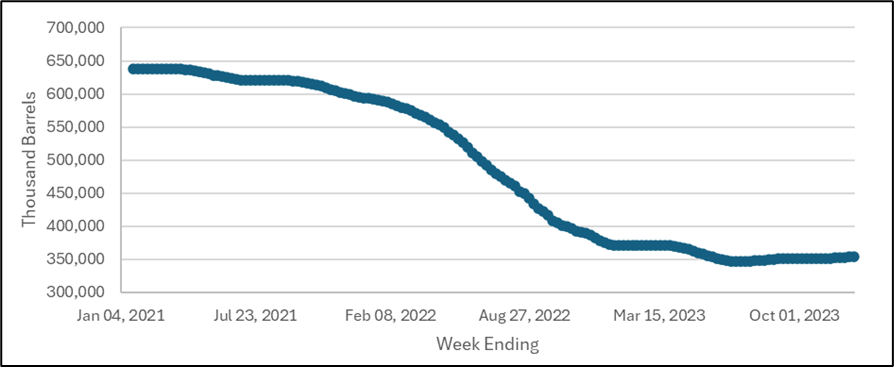
Time Needed to Refill the SPR?
Given the current geopolitical environment, with the War in Ukraine, the Israel-Palestine Conflict, the continuing tension between the U.S. and China, and the recent attacks on shipping vessels in the Red Sea, one might ask how long it will take to return the SPR to a full level of 714 million barrels?
Having a full SPR provides a great deal of energy security for America in the face of potential supply disruptions. Recently, given that prices have declined some from their $90+ levels a few months ago, the U.S. has started to refill the SPR at a rate of 3 million barrels per month, which is currently the maximum level at which it can be refilled given physical constraints.4
Given today’s level of 355 million barrels, this implies it will take another 359 million barrels of oil to refill the SPR to its maximum capacity. At a rate of 3 million per month being added, this implies a best-case refill time of 10 years.
Cost to Refill the SPR?
If crude oil continues to trade around $70 - $75 per barrel over the time needed to refill the SPR (10 years), the value of the oil required to replace the SPR volumes removed will be approximately $25 billion to $27 billion. In summary, there is no quick fix to refill the SPR and the cost will be significant.
WTI Strip Prices Decrease
Spot prices and futures prices for the West Texas Intermediate (WTI) contract decreased by approximately $0.15 per barrel in the near term and decreased approximately $0.50 over the longer term.
WTI Strip Prices – One Month Change
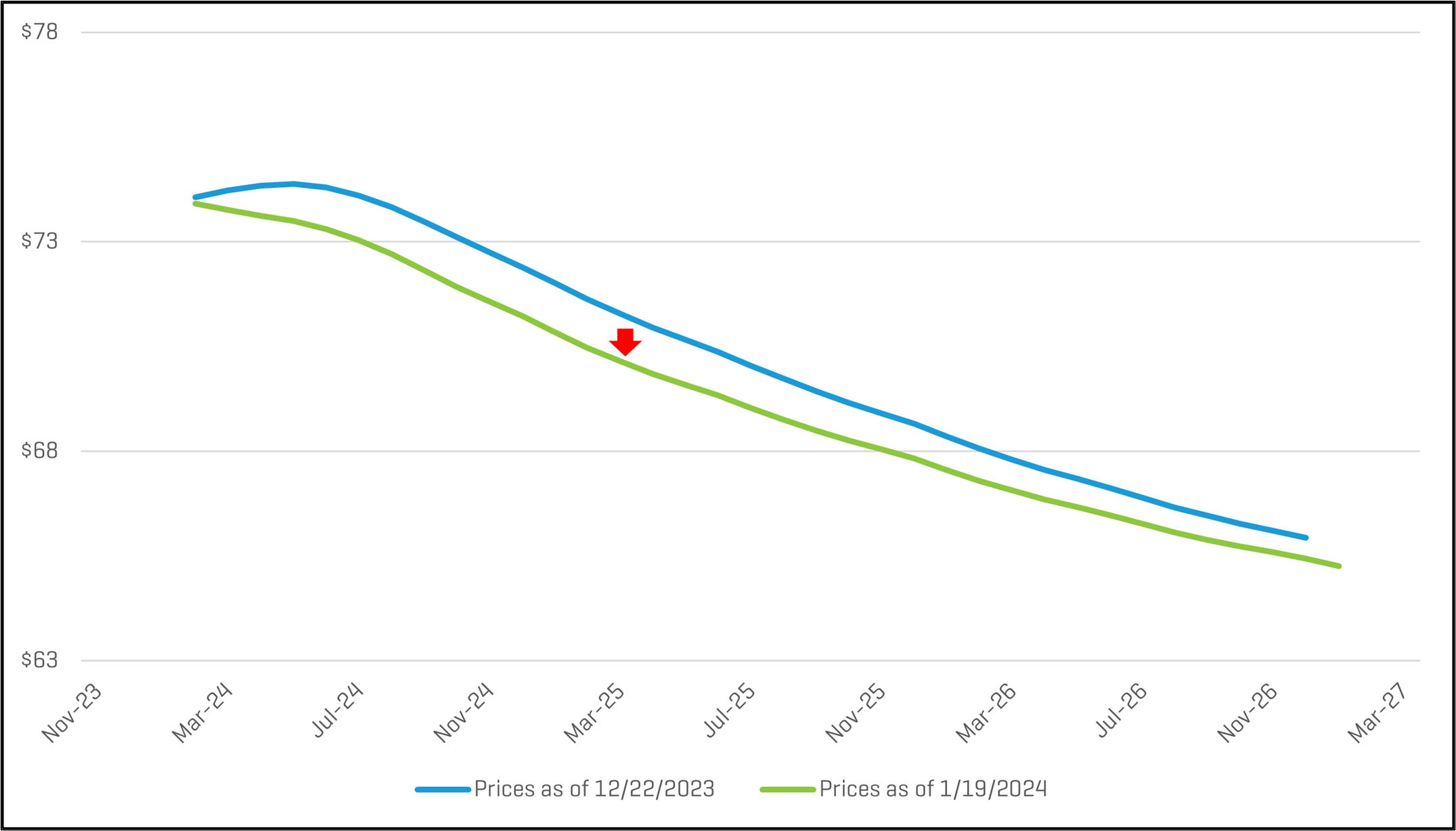
As shown, the oil price curve remains in a state of “backwardation,” reflecting the market’s expectation of lower future spot prices.
Oil Price Outlook
The price distribution below shows the crude oil spot price on January 22, 2024, as well as the predicted crude oil prices based on options and futures markets. Light blue lines are within one standard deviation (σ) of the mean, and dark blue lines are within two standard deviations.
WTI Crude Oil $/BBL
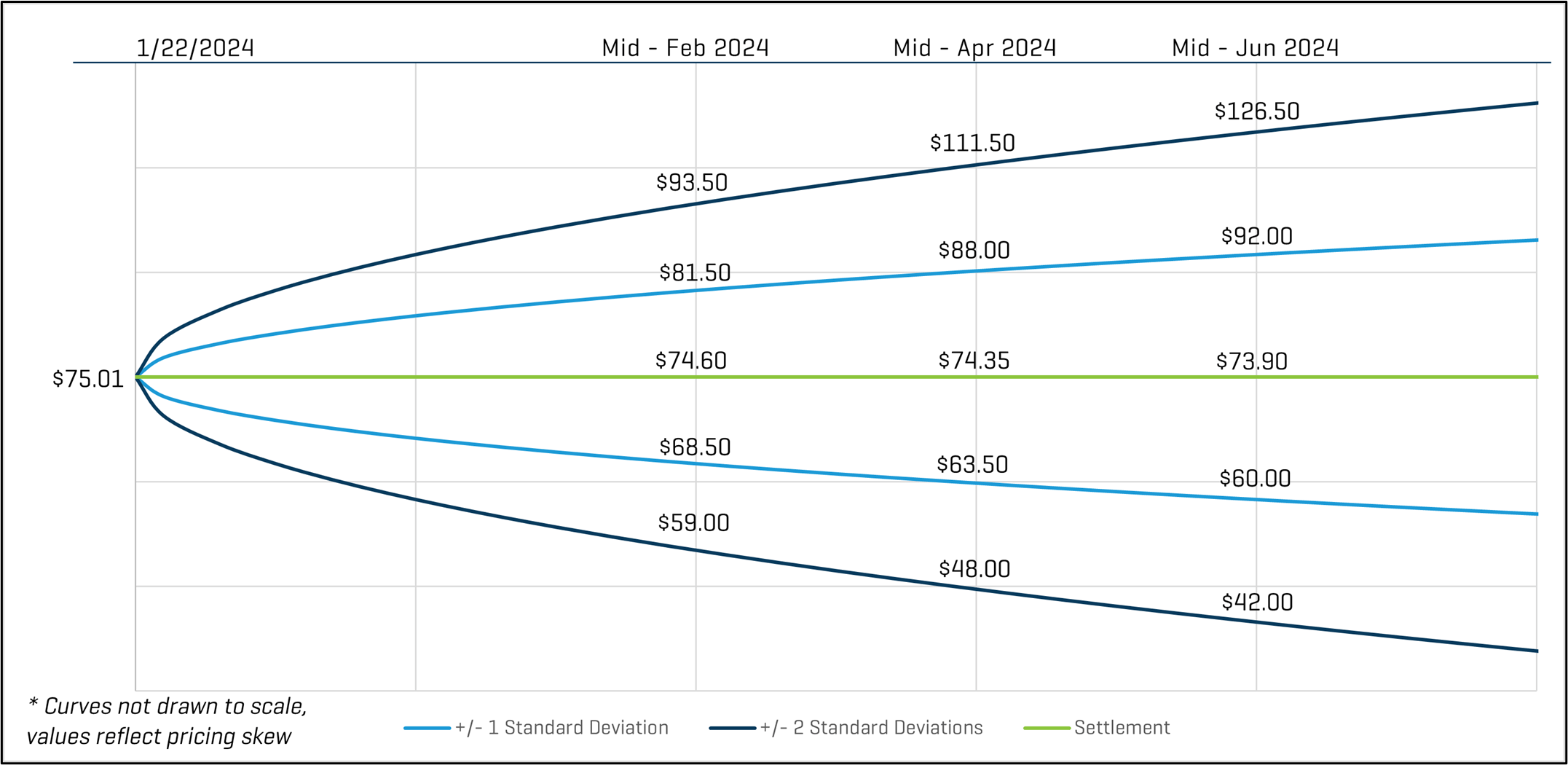
Based on these current prices, the markets indicate there is a 68% chance oil prices will range from $63.50 and $88.00 per barrel in mid-April 2024. Likewise, there is roughly a 95% chance that prices will be between $48.00 and $111.50. By mid-June 2024, the one-standard deviation (1σ) price range is $60.00 to $92.00 per barrel, and the two-standard deviation (2σ) range is $42.00 to $126.50 per barrel.
Key Takeaways
Remember that option prices and models reflect expected probabilities, not certain outcomes, but that does not make them any less useful. Through the early half of 2023, crude oil spot prices primarily fluctuated within the range of $70 to $80 per barrel. Thereafter, from August 2023 through October 2023, we observed spot prices primarily above that range. During that time, we observed an increase in futures price volatilities. As spot prices have settled back down to the $70 to $80 per barrel range, futures price volatilities have begun to decrease, as evidenced by the futures price ranges observed. For mid-June 2024 pricing as of January 22, 2024, the 1σ range had a spread of $32.00 per barrel, and the 2σ range has a spread of $84.50 per barrel. For comparison, in 2022 we observed 1σ and 2σ price ranges in excess of $65.00 and $150.00, respectively.
- Strategic Petroleum Reserve, Energy.gov.
- SPR Storage Sites, Energy.gov.
- Weekly U.S. Ending Stocks of Crude Oil in SPR, U.S. Energy Information Administration.
- “The US is refilling strategic oil reserves as fast as it can amid lower prices, but there are physical limits, Energy Department official says,” Aruni Soni, Markets Insider, December 4, 2023.


